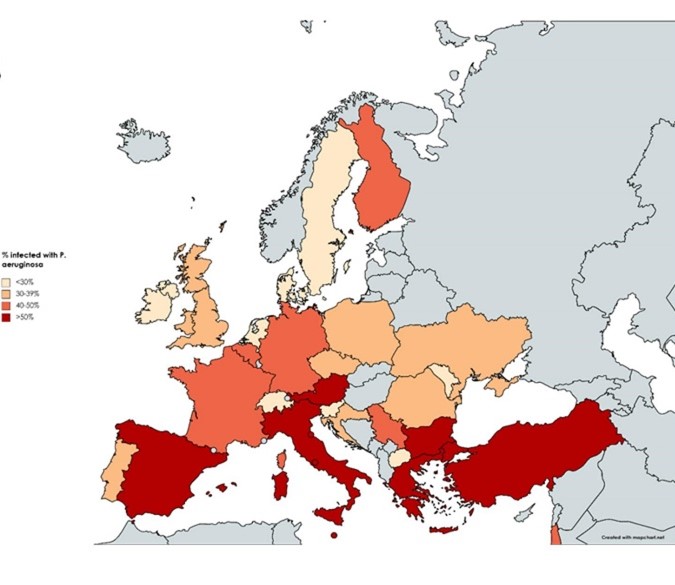Abstract
Introduction: Bacterial infection is part of the vicious vortex of bronchiectasis. The aim of this study was to map the microbiology of bronchiectasis patients between different countries.
Methods: Prospective registry of patients with bronchiectasis from 28 countries (2015-2022). Baseline microbiology was recorded from samples sent in stable state and during exacerbation in the previous 12 months.
Results: 16936 patients were enrolled (age 67 years, 60.9% female). 4813 patients (28.4%) had no microbiology data and were excluded. The most frequent bacteria isolated was P. aeruginosa 3047 (25.1%) followed by H. influenzae 2866 (23.6%), enterobacteriales 1929 (15.9%), S. aureus 1044 (8.6%) and S pneumoniae 1032 (8.5%). There were marked differences in the frequency of bacterial isolation between different regions. The majority of Southern European countries (Spain, Italy, Greece, Turkey) had P. aeruginosa infection in >50% of positive cases (figure 1),

Those countries where P. aeruginosa accounted for <40% of cases were predominantly in Northern Europe (p<0.0001) H. influenzae was more common than P. aeruginosa in Ireland, Netherlands, Israel, Denmark, Macedonia, Portugal, Switzerland, Slovenia and UK while P. aeruginosa was more common in most other countries.
Conclusion: P. aeruginosa and H. influenzae are the dominant pathogens in bronchiectasis but with marked geographical heterogeneity.